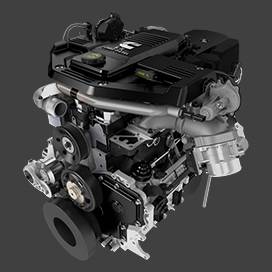Dec . 19, 2024 07:01 Back to list
Understanding ATV Brake Drums and Their Importance in Off-Road Performance
Understanding ATV Brake Drums Essential Insights for Enthusiasts
All-terrain vehicles (ATVs) are celebrated for their robust performance and capability to navigate a variety of terrains. Essential to the functionality and safety of these vehicles is a well-maintained braking system. Among the components that play a crucial role in this system are brake drums. Understanding their function, maintenance, and importance can significantly enhance an ATV owner's experience and safety.
What Are Brake Drums?
Brake drums are circular metal components that form a crucial part of a drum brake system. When the ATV's driver presses the brake pedal, brake shoes inside the drum expand outward, pressing against the inner surface of the drum. This action creates friction, which slows down or stops the vehicle. Unlike disc brakes, which are more common in modern vehicles, drum brakes offer several advantages, especially for ATVs that often operate in rugged conditions.
Advantages of Brake Drums
1. Durability Brake drums are typically made from cast iron or steel, materials that can withstand the harsh conditions found in off-road riding environments. Their robust construction means they are less likely to warp or degrade under extreme usage conditions.
2. Cost-Effectiveness While not as high-tech as disc brakes, brake drums are usually less expensive. This affordability makes them an attractive choice for budget-conscious ATV owners.
3. Performance in Mud and Water For ATV enthusiasts who enjoy muddy trails or water crossings, brake drums tend to perform better in these environments. Since they are enclosed, they are less susceptible to mud and debris compared to exposed disc brakes.
Maintenance of ATV Brake Drums
Maintaining brake drums is essential for ensuring safety and optimal performance
. Here are some key aspects of maintenance1. Regular Inspection ATV owners should regularly inspect their brake drums for signs of wear and tear. This includes checking for cracks, rust, and uneven wear on the surface. Any irregularities can significantly affect braking performance.
atv brake drums

2. Brake Shoe Replacement The brake shoes are the parts that make contact with the drum. Over time, they can wear out and need replacing. Signs that it's time to replace the brake shoes include a grinding noise or a noticeable decrease in braking effectiveness.
3. Cleaning Keeping brake drums clean is vital, particularly in muddy or dusty conditions. Dirt and debris can accumulate and affect the effectiveness of the brakes. Regular cleaning helps maintain optimal performance.
4. Professional Servicing If you're not comfortable performing maintenance tasks yourself, it's essential to have your ATV serviced by a qualified mechanic. They can ensure that your brake drums and associated components are in good working order.
Signs of Brake Drum Issues
Recognizing the signs of problems with your brake drums can prevent dangerous situations. If you notice any of the following, it’s time to investigate further
- Unusual Noises Grinding or squeaking noises when applying the brakes can indicate worn brake shoes or a problem with the drum itself.
- Pulling to One Side If your ATV pulls to one side when braking, it could be a symptom of uneven wear or malfunctioning brake components.
- Longer Stopping Distances A noticeable increase in the distance required to stop can signal that your brake drums are not functioning effectively.
Conclusion
ATV brake drums are a fundamental part of ensuring safe, efficient performance in diverse riding conditions. Understanding their function, along with proper maintenance and inspection, can significantly enhance both the longevity of the braking system and the overall riding experience. By paying attention to the signs of wear and choosing to perform proactive maintenance, ATV owners can enjoy their adventures with confidence, knowing that they have a reliable braking system at their disposal. Whether you’re a seasoned rider or new to the ATV scene, understanding and caring for your brake drums is crucial for safety and enjoyment on the trails.
-
Scania Brake Drums: OEM Quality for Optimal Safety & Durability
NewsAug.16,2025
-
R.V.I: Advanced Remote Visual Inspection for Precision
NewsAug.15,2025
-
Discover HYUNDA: Innovative Vehicles, Equipment & Solutions
NewsAug.14,2025
-
R.V.I: Unlock Advanced Insights & Real-time Performance
NewsAug.13,2025
-
Kamaz Brake Drum: Durable & Reliable for Heavy Duty Trucks
NewsAug.12,2025
-
Heavy Duty Iveco Brake Drum - Premium Quality & Safety
NewsAug.11,2025
